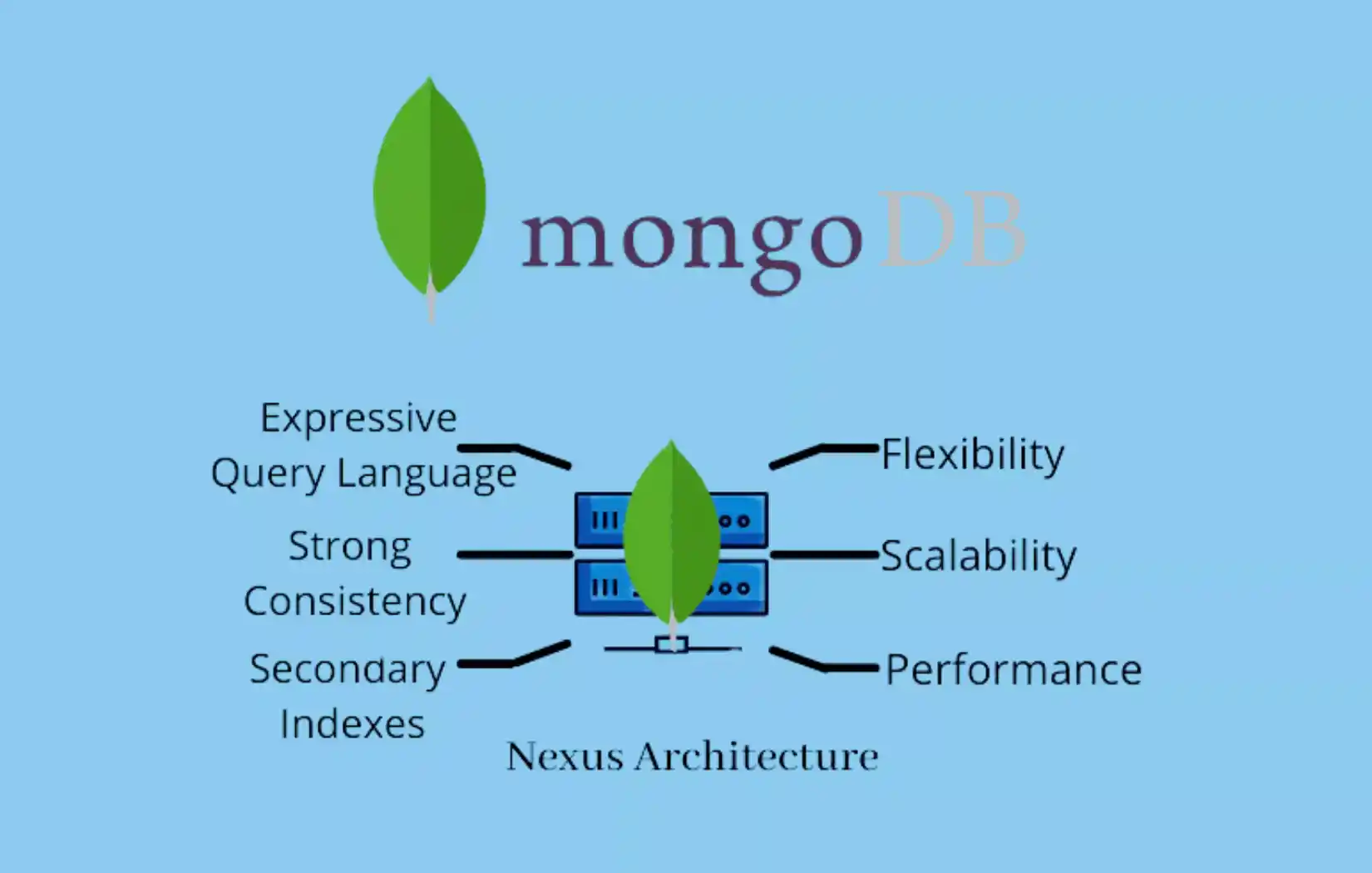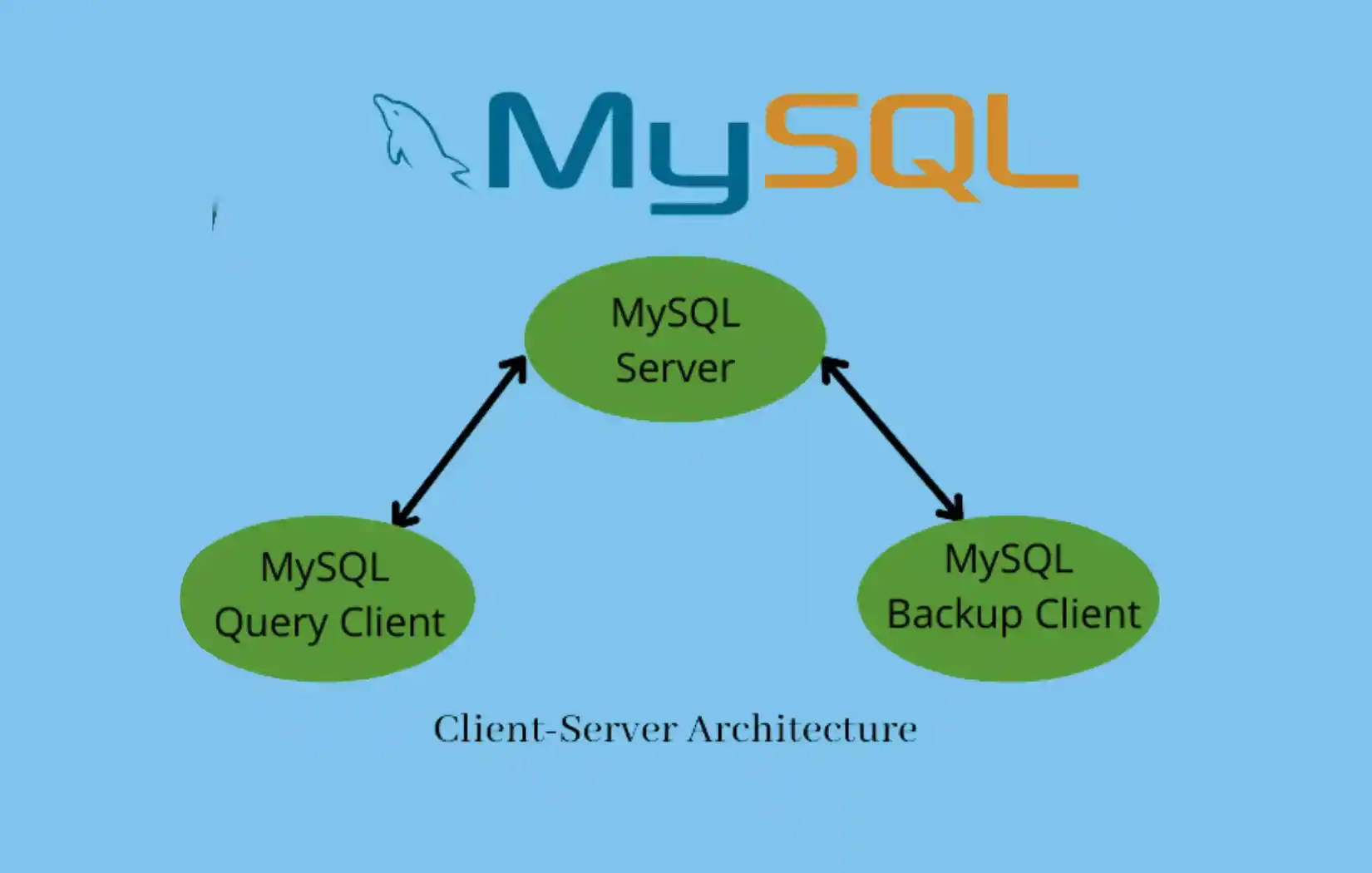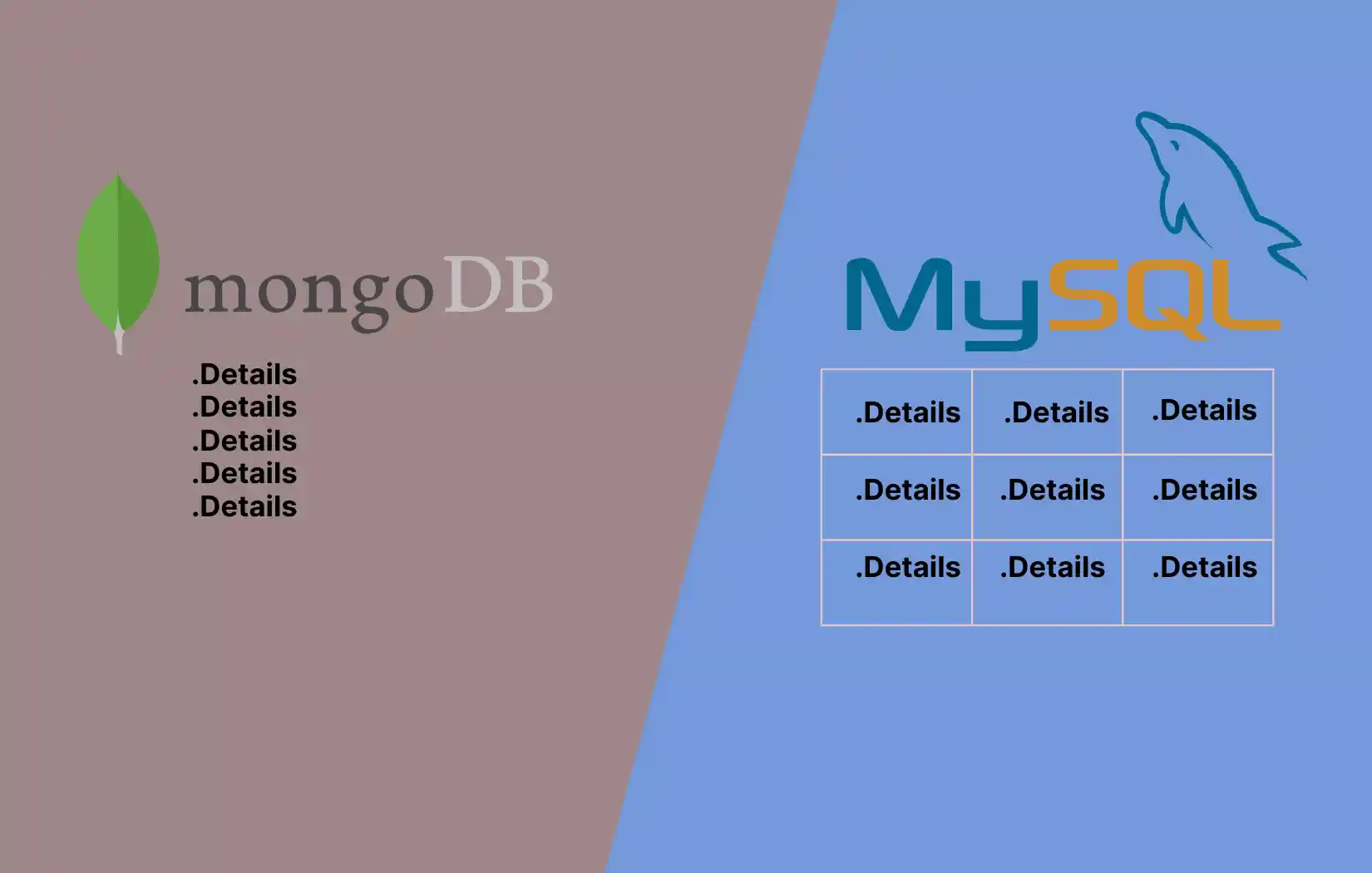Table of Contents
Navigating the ever-evolving landscape of database management systems, MongoDB and MySQL emerge as prominent players, each boasting distinct features and advantages. The critical decision of selecting the ideal database for your application holds the power to shape its performance, scalability, and overall development experience.
Within this guide, we embark on an exploration of the MongoDB and MySQL debate, unraveling their nuanced disparities, leveraging strengths, and outlining tailored use cases.
Our aim is for MongoDB and MySQL to empower you with insights that facilitate a judicious decision-making process, ensuring that the database you choose aligns seamlessly with the unique demands of your project.
Understanding MongoDB and MySQL
MongoDB

MongoDB employs the BSON (Binary JSON) format for data storage, accommodating intricate data structures. This feature renders it particularly adept at meeting the demands of applications with evolving schema requirements. Notably, MongoDB excels in horizontal scalability, offering an optimal solution for managing substantial volumes of unstructured data.
Its prowess in dynamically adapting to evolving data structures and seamlessly scaling horizontally positions MongoDB as a go-to choice for projects with fluctuating data needs and the necessity to handle extensive, unstructured datasets.
MySQL

MySQL represents a traditional relational database management system (RDBMS), leveraging the structured query language (SQL). It meticulously organizes data into tables, adhering to predefined schemas that guarantee data integrity through robust relationships.
MySQL has stood the test of time as a stalwart choice, particularly favored in applications characterized by well-defined and static data structures. Over the years, its reliability and adherence to established database principles have made it a trusted companion for a myriad of projects.
MySQL’s commitment to maintaining data consistency through structured relationships positions it as an enduring solution for applications where a stable, unchanging data model is paramount.
MongoDB and MySQL Key Differences
- Data Model:
- MongoDB: Employs a flexible, schema-less data model, allowing developers to store and manage diverse data types within the same collection.
- MySQL: Adheres to a rigid, schema-based structure, where tables must conform to predefined schemas, ensuring data integrity through relationships.
- Scalability:
- MongoDB: Scales horizontally by adding more servers to a distributed database, making it suitable for applications with growing data demands.
- MySQL: Traditionally scales vertically by adding more resources to a single server, which may have limitations in handling increasing workloads.
- Complexity and Development Speed:
- MongoDB: Offers faster development speed due to its dynamic schema and the ability to store diverse data types without the need for complex migrations.
- MySQL: Requires careful upfront planning and schema design, which may slow down development, but can provide structure and clarity in the long run.
MongoDB and MYSQL Use Cases
When to Choose MongoDB
- Large-scale applications with rapidly changing data structures.
- Projects where horizontal scalability is a priority.
- Development teams focused on rapid prototyping and iterative development.
When to Choose MySQL
- Applications with well-defined and static data structures.
- Environments that prioritize data integrity through strong relationships.
- Projects requiring ACID (Atomicity, Consistency, Isolation, Durability) compliance.
Performance and Speed
MongoDB
- Excels in read and write-intensive operations due to its distributed architecture.
- Efficient for handling unstructured or semi-structured data.
MySQL
- Performs well in read-heavy operations, especially when complex queries are involved.
- Suitable for transactional applications where data consistency is crucial.
Community and Support
MongoDB
- Has a thriving community and regular updates, with extensive documentation available.
- MongoDB Atlas, a cloud-based database service, provides additional support and scalability options.
MySQL
- A well-established community with strong support from Oracle, the current owner.
- Offers a variety of third-party tools and plugins for enhanced functionality.
Data Storage Format

MongoDB and MySQL are both popular database management systems, but they have different approaches to data storage.
MongoDB
- Data Format: MongoDB stores data in BSON (Binary JSON) format, which is a binary-encoded serialization of JSON-like documents. BSON supports various data types, including strings, numbers, arrays, and nested documents.
- Schema: MongoDB is a NoSQL database, which means it is schema-less. Each document in a collection can have a different structure, allowing for flexibility in data representation. This can be advantageous for dynamic or evolving data.
- Query Language: MongoDB uses a query language that is similar to JSON and supports rich queries. It allows for flexible and powerful searches, making it suitable for handling unstructured or semi-structured data.
MySQL
- Data Format: MySQL, being a relational database, stores data in tables with predefined schemas. It supports various data types such as integers, strings, dates, etc., following a structured format.
- Schema: MySQL requires a predefined schema where you define tables, their columns, and data types. Each row in a table adheres to this structure, providing a rigid and organized way of storing data.
- Query Language: MySQL uses SQL (Structured Query Language) for querying and managing the database. SQL provides a standardized way to interact with relational databases and is known for its simplicity and efficiency in handling structured data.
MongoDB and MySQL Architecture
Database management systems play a crucial role in the modern digital landscape, and MongoDB and MySQL stand out as two popular choices with distinct architectures. Let’s delve into a detailed comparison of their architectures, exploring key differences and strengths.
MongoDB Architecture
MongoDB adopts a NoSQL, document-oriented approach, designed to handle large volumes of unstructured or semi-structured data efficiently.
- Document-Oriented Storage: MongoDB stores data in BSON (Binary JSON) format, a binary-encoded serialization of JSON-like documents. This document-oriented storage is well-suited for handling diverse and evolving data structures.
- Collections and Documents: Data is organized into collections, which are analogous to tables in relational databases. Each collection contains documents, which are individual records representing data in a JSON-like format.
- Schema-Less Design: MongoDB is schema-less, allowing each document within a collection to have a different structure. This flexibility is particularly advantageous for applications with dynamic or evolving data models.
- Indexing: MongoDB supports indexing to enhance query performance. Indexes can be created on any field within a document, enabling faster retrieval of data.
- Scalability: MongoDB is designed for horizontal scalability, allowing the distribution of data across multiple servers or clusters. This architecture makes it well-suited for handling large datasets and providing high performance.
- Query Language: MongoDB uses a query language that resembles JSON. It supports rich queries, making it easy to retrieve and manipulate data. This flexibility is beneficial for developers working with unstructured or semi-structured data.
MySQL Architecture
MySQL, on the other hand, is a traditional relational database management system (RDBMS) with a structured approach to data storage.
- Relational Tables: MySQL organizes data into relational tables with predefined schemas. Each table consists of rows and columns, where each column has a specific data type, enforcing a structured and consistent data model.
- Schema: MySQL requires a predefined schema, specifying the structure of tables and the relationships between them. This schema provides a clear and rigid framework for data storage.
- ACID Compliance: MySQL adheres to ACID (Atomicity, Consistency, Isolation, Durability) properties, ensuring transactions are reliably processed. This makes MySQL suitable for applications where data integrity and consistency are paramount.
- Joins and Relationships: MySQL supports complex queries, including joins, to retrieve data from multiple tables. This relational approach allows for the efficient handling of interrelated data.
- Transactions: MySQL provides transaction support, allowing multiple operations to be grouped together and executed as a single unit. This ensures data integrity and consistency, critical for applications with complex transactional requirements.
- Scalability: While MySQL supports vertical scalability by enhancing hardware resources on a single server, horizontal scalability can be achieved to a certain extent through techniques like sharding. However, it may not scale as seamlessly as MongoDB in certain scenarios.
Choosing the Right Architecture
The choice between MongoDB and MySQL depends on the specific needs of your application. If you’re dealing with diverse, evolving, or unstructured data, MongoDB’s document-oriented, schema-less architecture may be a better fit. On the other hand, if your application demands a structured, relational model with ACID compliance, MySQL could be the preferred choice.
Comparison Table
| Aspect | MongoDB | MySQL |
|---|---|---|
| Data Model | Document-oriented, schema-less | Relational, structured with predefined schemas |
| Query Language | JSON-based queries | SQL (Structured Query Language) |
| Scalability | Horizontal scaling (sharding) | Vertical scaling (adding resources to a server) |
| Schema | Dynamic schema | Static schema |
| Data Integrity | Flexible, less strict relationships | Strong relationships, adherence to ACID |
| Complexity | Simple and flexible | Requires careful schema design and planning |
| Development Speed | Rapid development due to dynamic schema | May be slower due to upfront schema planning |
| Use Cases | Large-scale applications, evolving data | Well-defined applications with static data |
| Performance | Efficient for read and write-intensive operations | Performs well in read-heavy and complex queries |
| Community Support | Thriving community, regular updates | Well-established community, strong Oracle support |
| Security | Role-based access control, encryption options | User privilege management, encryption features |
| Documentation | Extensive documentation | Comprehensive documentation and resources |
| Cost | Open-source, commercial options available | Open-source, various editions including enterprise |
This table provides a snapshot of the MongoDB and MySQL comparison, helping you assess their strengths and weaknesses in different areas. Remember, the choice between MongoDB and MySQL should align with your project’s specific needs and priorities.
Conclusion
In the MongoDB and MySQL debate, the right choice ultimately depends on the specific requirements of your project. MongoDB is well-suited for dynamic, evolving applications with a focus on scalability, while MySQL is a reliable choice for projects with well-defined structures and a need for strong data relationships.
Consider the nature of your data, scalability needs, and development priorities when making your decision. Whether you opt for the flexibility of MongoDB or the structure of MySQL, both databases have proven track records in powering a wide range of applications. Stay informed, weigh the pros and cons, and choose the database that aligns with your project’s unique demands.
FAQs
Q. Is MongoDB better than SQL databases?
A. Schema restrictions also limit the dynamic classification and storage of hierarchical data. With MongoDB, you don’t have such constraints, which makes MongoDB more flexible than SQL Server.
Whether your data is formatted or it’s completely unstructured, you can easily store it in a non-tabular format.
Q. Why do people prefer MongoDB?
A. MongoDB is ideal for cloud computing. Cloud-based storage needs to easily distribute data across multiple servers, which suits MongoDB’s nature perfectly. You need your data fast and easily accessible. Use MongoDB when you’re running performance-critical applications.
Q. Why should I choose MongoDB over MySQL for my application?
A. MongoDB is an excellent choice for applications with rapidly changing data structures. Its flexible, schema-less data model allows for the storage and management of diverse data types within the same collection, making it ideal for projects where the schema evolves.
Additionally, MongoDB’s horizontal scalability, achieved through sharding, makes it suitable for large-scale applications with growing data demands. If your development team prioritizes rapid prototyping and iterative development, MongoDB’s dynamic schema and efficient handling of unstructured data make it a compelling option.
Q. When is MySQL a better fit for my project compared to MongoDB?
A. MySQL is a strong contender for projects with well-defined and static data structures. Its relational, schema-based approach ensures data integrity through strong relationships, making it suitable for applications where a structured and consistent data schema is a priority.
MySQL excels in read-heavy operations, especially when dealing with complex queries. If your project requires a traditional RDBMS with ACID compliance, and you value careful upfront planning and schema design, MySQL might be the better choice.
Q. How does the performance of MongoDB and MySQL differ, and which is more suitable for my use case?
A. The performance of MongoDB and MySQL varies based on the nature of your application. MongoDB and MySQL excel in read and write-intensive operations, thanks to their distributed architecture, making it efficient for handling unstructured or semi-structured data.
On the other hand, MongoDB and MySQL perform well in read-heavy operations, especially when dealing with complex queries. The choice between the two depends on your specific use case – if your application demands dynamic, evolving data structures and horizontal scalability, MongoDB is a strong contender.
If your project involves well-defined data structures and emphasizes transactional consistency, MySQL may be the more suitable option.





